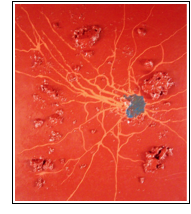Le connectivisme (néo socioconstructivisme)
On ne fait pas la découverte d’une nouvelle théorie d’apprentissage tous les jours. Dans Connectivism: A Learning Theory for the Digital Age, George Siemens explique comment les nouvelles technologies affectent l’apprentissage et pourquoi elles sont désormais nécessaires. C’est une lecture indispensable pour tous ceux qui s’intéressent à l’acquisition des apprentissages. …
Essentiellement, le connectivisme constitue un modèle d’apprentissage qui reconnaît les bouleversements sociaux occasionnés par les nouvelles technologies, lesquels font en sorte que l’apprentissage n’est plus seulement une activité individualiste et interne, mais est aussi fonction de l’entourage et des outils de communication dont on dispose.
Quelques extraits saillants :
• One of the most persuasive factors is the shrinking half-life of knowledge. The “half-life of knowledge” is the time span from when knowledge is gained to when it becomes obsolete.
• Formal education no longer comprises the majority of our learning. Learning now occurs in a variety of ways – through communities of practice, personal networks, and through completion of work-related tasks.
• Technology is altering (rewiring) our brains. The tools we use define and shape our thinking.
• The organization and the individual are both learning organisms.
• Many of the processes previously handled by learning theories (especially in cognitive information processing) can now be off-loaded to, or supported by, technology.
• Know-how and know-what is being supplemented with know-where (the understanding of where to find knowledge needed).
• We derive our competence from forming connections.
• Since we cannot experience everything, other people’s experiences, and hence other people, become the surrogate for knowledge. ‘I store my knowledge in my friends’ is an axiom for collecting knowledge through collecting people.
• Chaos is a new reality for knowledge workers. [...] Chaos is the breakdown of predictability, evidenced in complicated arrangements that initially defy order. Unlike constructivism, which states that learners attempt to foster understanding by meaning making tasks, chaos states that the meaning exists – the learner’s challenge is to recognize the patterns which appear to be hidden. Meaning-making and forming connections between specialized communities are important activities.
• Learning, as a self-organizing process requires that the system (personal or organizational learning systems) “be informationally open, that is, for it to be able to classify its own interaction with an environment, it must be able to change its structure.
• Self-organization on a personal level is a micro-process of the larger self-organizing knowledge constructs created within corporate or institutional environments. The capacity to form connections between sources of information, and thereby create useful information patterns, is required to learn in our knowledge economy.
• Nodes always compete for connections because links represent survival in an interconnected world.
• Connectivism is driven by the understanding that decisions are based on rapidly altering foundations. New information is continually being acquired. The ability to draw distinctions between important and unimportant information is vital. The ability to recognize when new information alters the landscape based on decisions made yesterday is also critical.
• Within social networks, hubs are well-connected people who are able to foster and maintain knowledge flow.
• As knowledge continues to grow and evolve, access to what is needed is more important than what the learner currently possesses.
• Principles of connectivism:
- - Learning and knowledge rests in diversity of opinions.
- Learning is a process of connecting specialized nodes or information sources.
- Learning may reside in non-human appliances.
- Capacity to know more is more critical than what is currently known.
- Nurturing and maintaining connections is needed to facilitate continual learning.
- Ability to see connections between fields, ideas, and concepts is a core skill.
- Currency (accurate, up-to-date knowledge) is the intent of all connectivist learning activities.
- Decision-making is itself a learning process. Choosing what to learn and the meaning of incoming information is seen through the lens of a shifting reality. While there is a right answer now, it may be wrong tomorrow due to alterations in the information climate affecting the decision.
Mise à jour, 04 février 2010 | Parmi les nombreuses présentations du connectivisme par George Siemens, toutes aussi éclairantes les unes que les autres, je retiens particulièrement celle-ci :
Par ricochet :
Principes d’apprentissage
Vous pouvez suivre les commentaires en réponse à ce billet avec le RSS 2.0 Vous pouvez laisser une réponse, ou trackback.









Et en même temps, sur l’Infobourg, on trouve un éditorial titré : Et si les ordinateurs mettaient un frein à l’apprentissage? (http://www.infobourg.qc.ca/AfficheTexte/edito.asp?DevID=1772)
J’avoue que ce texte sur le connectivisme me fait beaucoup de bien!